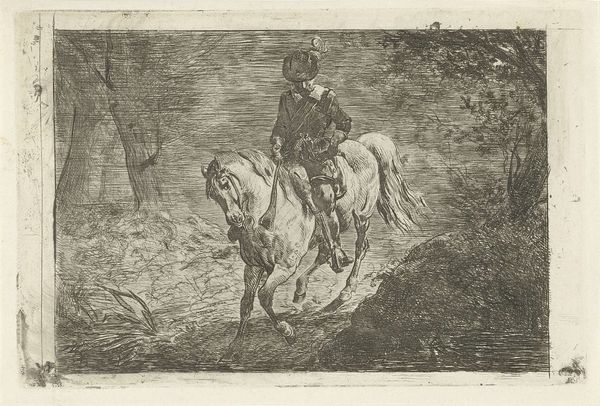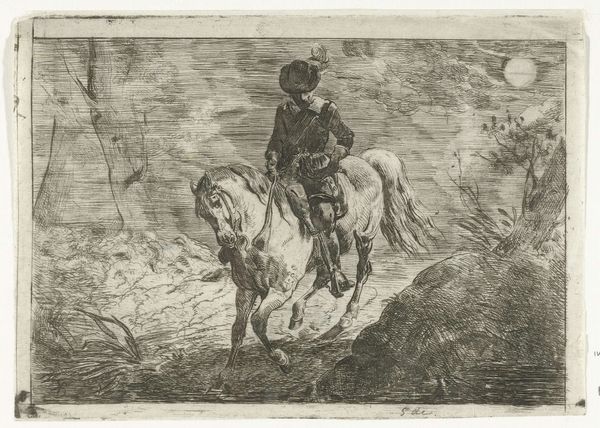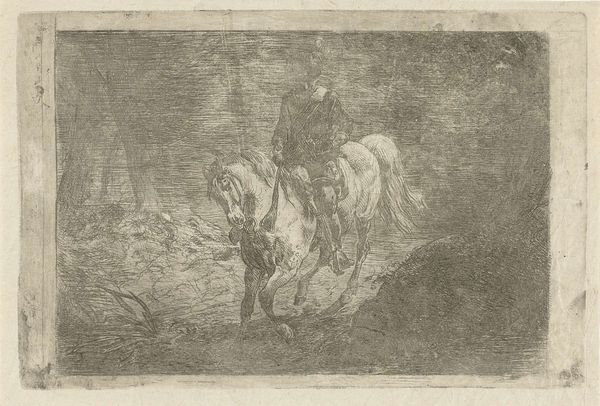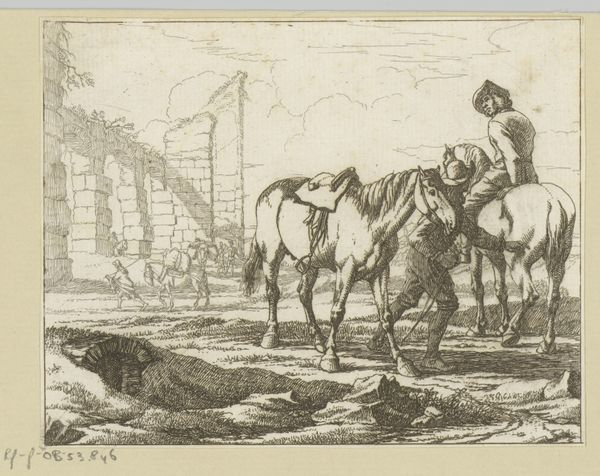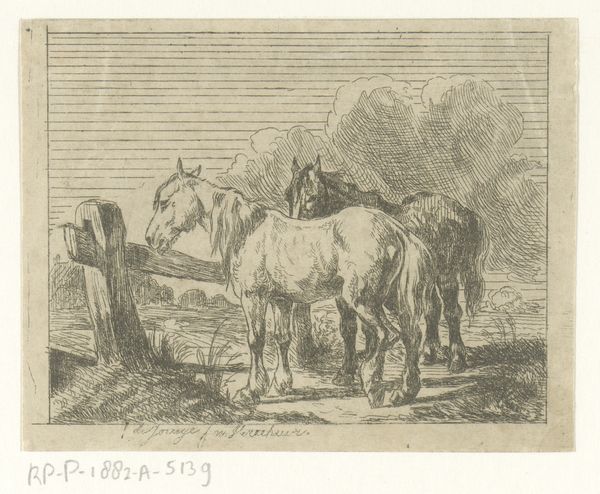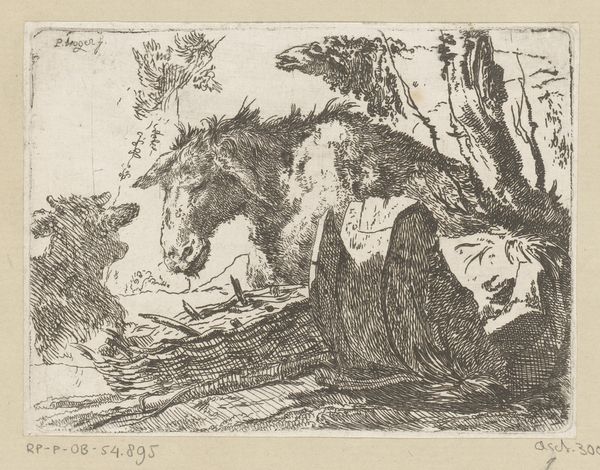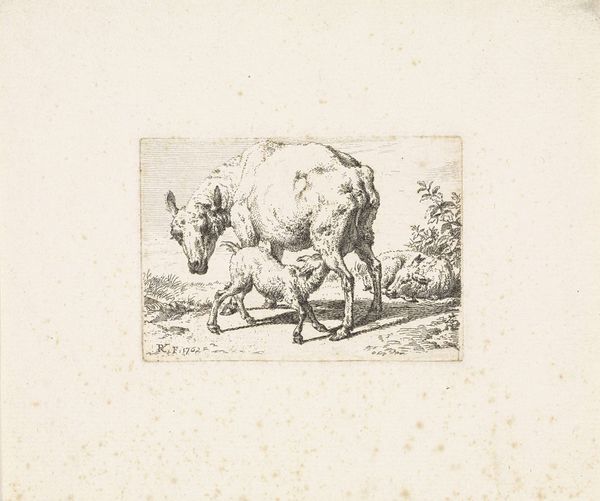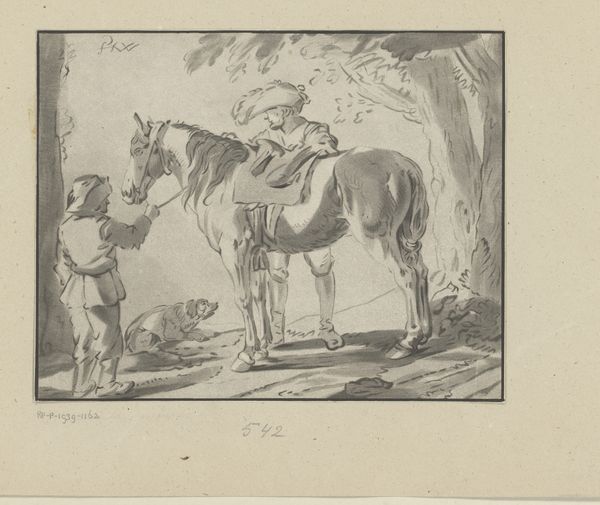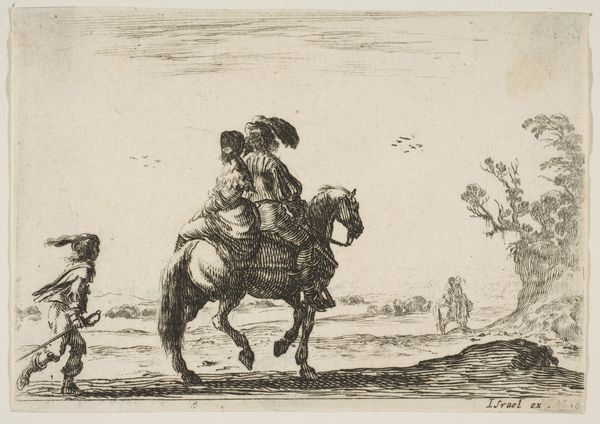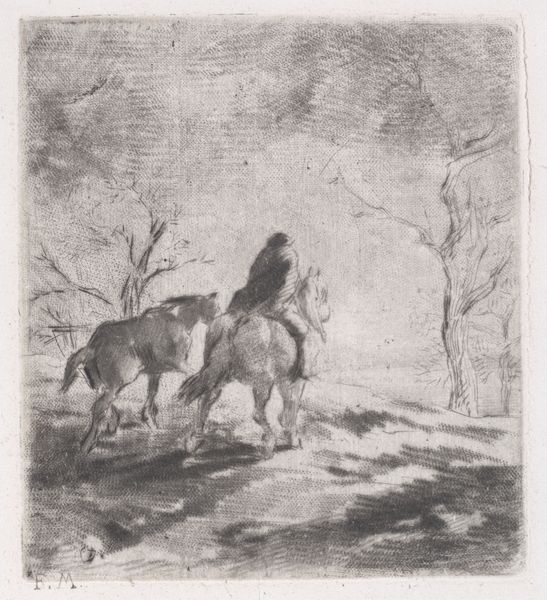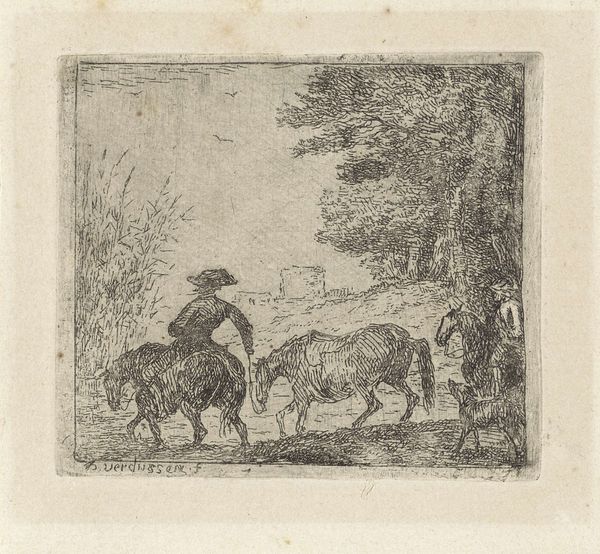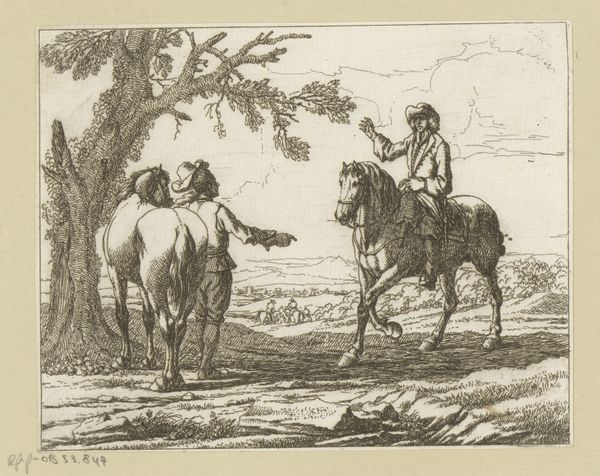
Dimensions: height 125 mm, width 189 mm
Copyright: Rijks Museum: Open Domain
Curator: This etching, entitled "Ruiter," which translates to "Rider," is attributed to Karel Frederik Bombled, and its creation dates between 1832 and 1902. Editor: It's quite striking. The texture created by the etching process gives the image a sense of immediacy and movement. I can almost feel the dampness of the forest floor and hear the horse’s hooves. Curator: Indeed, the technique contributes greatly to the atmosphere. Bombled employs etching to evoke elements of both Realism and Romanticism, capturing the subject with accuracy while also imbuing it with a sense of drama. Think about the public role of portraying rural gentry... Editor: Speaking of technique, I find myself wondering about the labor involved in producing this print. Each line meticulously etched, the plate inked and pressed...it is easy to miss the physicality of its production and appreciate it purely for the image. Curator: Absolutely, the act of distribution also informs how we value and see it, though: printmaking was intrinsically linked to the dissemination of ideas. It's also a genre-painting, capturing everyday life for consumption... who did it target? Editor: It's fascinating to think about how these images circulated. This etching reminds us that even seemingly simple scenes required skill, time, and a complex production process to come to life. Curator: By displaying it here in the Rijksmuseum, it now tells a completely different story, now, doesn’t it? Editor: It certainly does. Considering it in that light gives me a much greater appreciation for not only its image, but the materials, labor, and processes necessary to bring a work like "Ruiter" into being. Curator: Precisely. It invites us to consider its role, impact, and the story it carries within it.
Comments
No comments
Be the first to comment and join the conversation on the ultimate creative platform.
